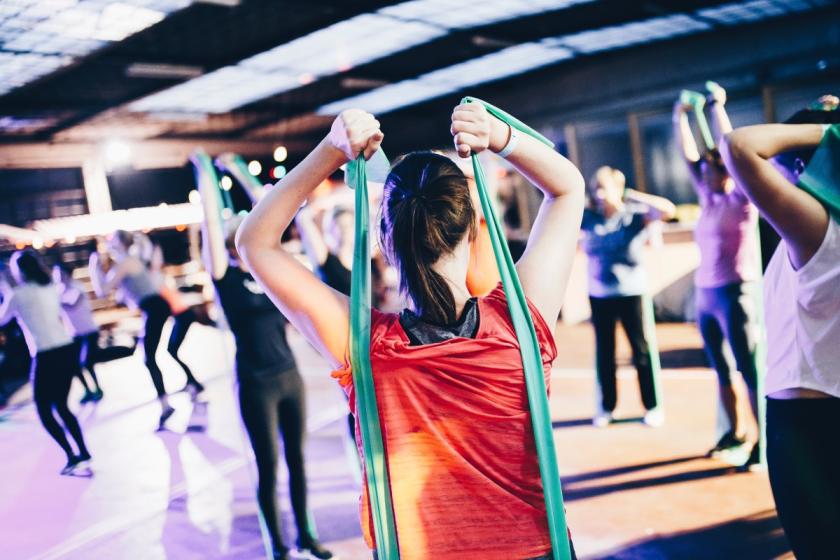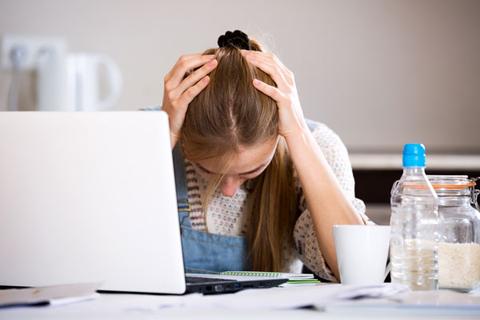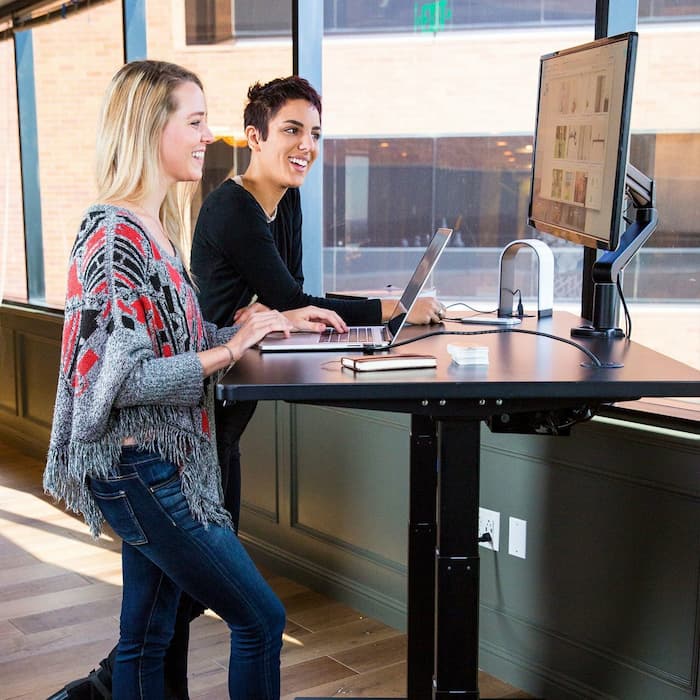
Exercises for Lower Back Pain Relief
Four Types of Effective Exercises for Lower Back Pain Relief
Back pain can be a real bummer. Once the pain has set in, moving becomes challenging. That is why many people think that the best way to address it is by limiting movement or keeping still as much as possible. Well, this cannot be further from the truth.
On the contrary, moving does your back a lot of good. WebMD advises sufferers to perform exercises for lower back pain relief. These are designed to reduce pain while strengthening the back, stomach and leg muscles.
Before proceeding, however, make sure to inquire with your health care specialist. Doing so ensures your safety and the benefits you gain from each exercise.
Simple Core Strengthening Exercises for Lower Back Pain
Who would have thought that strengthening the abs and core will also work in reducing lower back pain? Experts have confirmed that planks and other exercises, which target abdominal muscle groups, also relieve that dull ache. Here are three core strengthening exercises for lower back pain from YurielKaim that you can include in your regimen.
I. How to Do a Basic Plank
Simple yet effective, planking fully stretches your body, particularly the limbs. It strengthens all the major muscles comprising your core while helping reduce fat around the waistline. Because it contracts all the muscle layers of your abdominal fascia with just simple moves, it alleviates lower back pain.
- Lie flat on your stomach.
- Raise your torso by propping yourself up on both elbows.
- Stretch your legs out backwards as you press into your heels.
- Hold this pose while keeping your abs tight with your body in a straight line from head to heel.
- Hold it for half a minute (30 seconds).
II. How to Do a Side Plank
Side planks target your obliques. In turn, working out these muscles keeps your spine and lower back muscles strong; along with your hamstrings, glutes and abs.
- Lie on your left side.
- Raise your torso by propping yourself up on your left elbow.
- Lift your hips by placing all your weight on your elbow. Keep your legs stretched out.
- Make sure that you tighten your gluteus and abdominal muscles while holding this position for half a minute (30 seconds).
- Slowly put your hips down and then your torso. Repeat on your right side.
III. How to Do a Bridge
Like the basic and side planks, the bridge works on the abdominals, glutes and lower back. That is why; it also helps ease back pain.
- Lie flat on your back with knees bent and both feet placed firmly on the floor.
- While tightening your gluteus and core, raise your hips. The line from your knees to your shoulders should be straight.
- Lift your hips by placing all your weight on your elbow. Keep your legs stretched out.
- Hold your position for three (3) seconds.
- Lower hips slowly. Keep your core and glutes tight. Repeat 10-15 more times.
Effective Yoga Exercises for Lower Back Pain
The muscle-building benefits of yoga exercises for lower back pain do more than just improve the overall appearance of the body. It also works well in preventing arthritis. Moreover, it can help decrease discomfort in your lumbar region where pain usually strikes. Check out these three effective poses to ease the soreness, as shared on DoYouYoga and Self.
I. How to Do a Sphinx
At first glance, the sphinx pose looks like a reversed back bend. Easy and effective, it helps keep the muscles in your lower back strong as it firms up your buttocks.
- Lie flat on your stomach with your legs stretched out behind you. Keep your legs hip-width apart and your arms at your sides with your chin comfortably resting on the mat. The tops of your feet should be on the mat with the toes spread out, not tucked in.
- Now move your arms up. Keep them stretched out with your forearms flat on the floor, parallel to each other. Your fingers should be pointed forward.
- Slowly raise your head and upper body off the floor. As you do this, bring your elbows close to your chest and inhale. Keep your hips firmly placed on the floor. To make it easier for you to stretch your back, roll your outer thighs a little bit towards the floor.
- Now twist your body to the left side while bringing your knees up towards your chest. While doing this, keep your neck neutral. Look to your left, not at your knees.
- Relax your facial muscles and keep your expression neutral while drawing your chin towards the back of your neck. Focus on the space between your eyes.
- Hold this position for 10 seconds.
- Exhale while slowly lowering your upper torso, chest and head down to the floor.
- Relax your arms at your sides and turn your head towards one side.
- Rest in this position for a few seconds.
- Repeat on the right side.
II. How To Do a Cat and Cow
A fluid combination of two poses, the cat and cow pose keeps your spine flexible. In the process, it also stretches out your neck and back while gently stimulating and strengthening your abdominal organs.
- Start this exercise with the cow pose by placing your hands and knees on the floor, emulating the neutral pose of a cow with the back arched and standing on four legs. Keep your spine and hips stretched out with your body parallel to the floor.
- Now you will do the cat pose. Raise your chest and tailbone towards the ceiling, by arching your back convexly. Make sure to inhale as you are doing this. Drop your head towards the floor but do not press your chin to your chest.
- Slowly return to the starting position (cow pose) by exhaling while lowering your back and tailbone as you arch your back concavely.
- Repeat this exercise 10-20 times.
- After finishing this set, just sit back on your heels while keeping your upper torso straight.
III. How To Do Downward Facing Dog
The downward facing dog pose benefits your spine. Aside from lengthening and strengthening, this move also decompresses it while stretching the hamstrings. One of the most commonly performed yoga poses, this work well as a transition between poses and for resting and building strength.
- Start this exercise by placing your hands and knees on the floor. Keep your wrists in line with your shoulders and your knees placed under your hips.
- Now stretch your elbows and upper back as you spread your fingers while pressing down your palms and knuckles to the floor.
- Then straighten your left leg as you bring the heel closer to the ground. Keep your hips raised up towards the ceiling. Then stretch your buttocks toward the direction behind you while straightening your legs. Make sure to keep your knees flexible. Your body will form an “A” shape whereby you will feel the stretch on your hips and thighs coming from the top of your thighs.
- Do the same with your right leg.
- Move your shoulder blades toward your spine as you lower them. Rotate your upper arms outwards while drawing your shoulder blades together
Must-Do Stretching Exercises for Lower Back Pain
No back exercise program is complete without stretching exercises for lower back pain, sourced from the Advanced Pain Management. These moves are designed to ease tension in the neck and back areas. As always, it will be in your best interest to consult with a health care professional before proceeding. The moves you will execute have to be adjusted based on the cause and source of your pain. Although generally advantageous, some exercises may prove harmful for your specific condition.
I. How To Do a Knee to Chest Stretch
This stretching exercise was designed to keep the proper alignment of your pelvis, lower back and buttocks muscles. Easy and relaxing, it is one of the most popular stretches done during cool-down periods following a rigorous exercise/physical activity.
- Lie on your back. Keep your toes pointed upwards.
- Bend your right knee slowly as you pull your leg up until your knee is aligned to your chest.
- Clasp your hands around your knee while slowly drawing your leg closer to your chest. Alternatively, you can also wrap your hands around your thigh.
- Maintain your position for half a minute (20 seconds).
- Stretch out the right leg to starting position. Then, repeat this exercise with your left knee.
II. How To Do a Piriformis Sitting Stretch
With this exercise, the piriformis muscles benefit the most. Doing it works well in easing that dull ache in your back. In addition, you can also strengthen these areas where sciatica or radiating leg pain originate.
- Sit on the floor with your back straight.
- Cross your left leg over your right leg. Keep your foot next to your thigh while tucking your right leg in towards your buttocks.
- Put your right hand on your left leg while stretching gently. See to it that your stomach is in and chest is out.
- Hold this position for 20 seconds.
- Switch sides and repeat.
III. How To Do a Cobra Stretch
If you normally suffer from a stiff back, doing the cobra stretch will loosen the muscles while easing discomfort. It also works best in relieving a sore neck and in strengthening the abdominal area.
- Lie on your stomach. Keep your legs stretched backwards and your arms on each side of your head. Your lower arms and elbows must be planted firmly on the ground.
- Using your hands with the palms pressed flat on the floor; push your upper body upwards slowly. Your entire weight now rests on your forearms. Keep your hips planted on the floor.
- Elevate your torso to a high-enough yet comfortable level. Once you have reached a suitable height, hold your pose for 10 seconds. Feel the gentle yet firm stretch in your lower back and abdominal muscles.
- Ease yourself slowly back into starting position.
- Repeat four more times.
Easy-Peasy Lower Back Exercises at Your Desk
Doing lower back exercises at your desk is a cinch. With a sturdy and ergonomically designed standing unit like StandDesk, performing simple stretches featured on The Nest to ease discomfort and strengthen the muscles becomes easier. These ergonomically designed workstations are built to promote better health. Therefore, you are not limited to using them for exercises. With regular use, you can look forward to bidding back pain farewell for good as well.
I. How To Do a Whole Back Stretch
This simple and easy stretch does more than just help ease back pain. It also works out the muscles in the whole area including the hamstrings, lower back and shoulders.
- Stand straight with legs open as wide as your hips. Place the sides of both hands on the edge of the desk a-la karate chop pose. Keep your arms stretched out and your back straight.
- Exhale as you slowly bend forward at the waist until your torso is parallel to the floor. Shift your weight to your heels, and keep your knees straight.
- Put your right hand on your left leg while stretching gently. Keep your stomach in and your chest out.
- Hold your pose for 5-6 seconds.
- Repeat two more times.
II. Stretching Glutes with Forward Bending
Another way to help ease pain while strengthening the back muscles is by stretching your glutes. Exercising this part, along with your lower back, loosens the hips and reduces droopiness.
- Stand next to your desk on your left leg only. Keep your right leg raised above the ground.
- Put your right leg on the desk with the outer knee and shin facing the surface.
- Stretch your right buttock as you hold your knee with your left hand and your ankle with your right hand.
- Bend forward while exhaling slowly until your ribs are on your leg. Feel the stretch as you hold this pose for 5-6 seconds.
- Return to standing position and repeat the exercise with your right leg.
III. Twisting and Bending
Stretching exercises that require being still for several seconds is not the only way to stretch your back muscles effectively. You can also do simple twisting and bending while standing by your desk to alleviate discomfort.
- Stand by your desk.
- Bend your torso to the left and then right.
- Rotate your torso to the left and then right.
- Finally bend forward and backward.
- Repeat all exercises 2-3 more times.
Check out our standing desk options for any home office or business at this link: Standing Desks For Your Office

